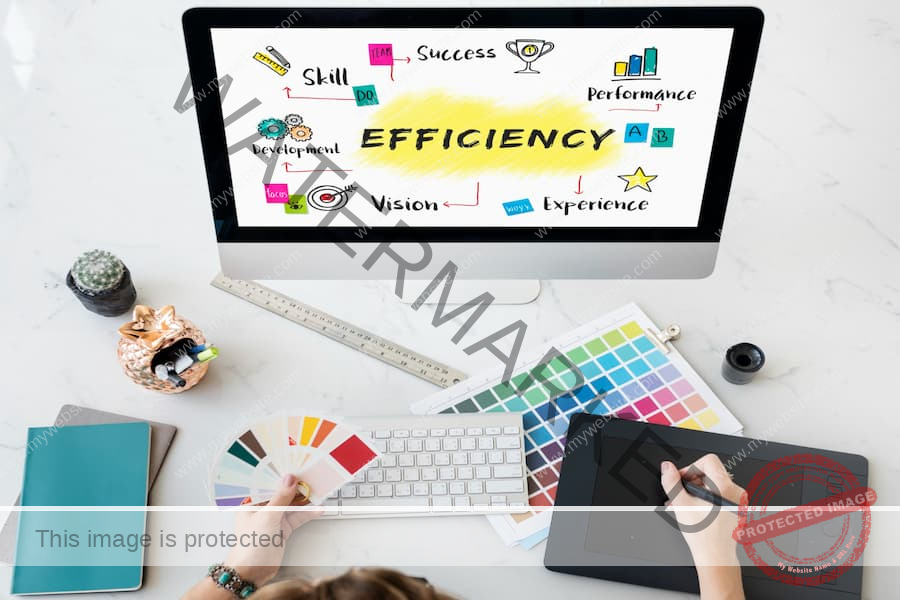Introduction
Visual identity is all the visual components that reflect a brand: logos, colour palettes, typeface, photographs, layout, and so on. When done correctly, it fosters confidence, awareness, and emotional connection. Inconsistent or incorrect execution confuses customers and damages brand value. Whether you are launching or expanding a company, knowing and enhancing your brand’s visual identity is absolutely vital.
Start with a Clear Brand Strategy
Every good visual identity starts with clarity. What does your brand aim to do? Who are your readers? What feelings would you like your brand to inspire? If your brand is a person, how would it dress, talk, and act? Responding to these strategic enquiries guarantees that your visual design is not only appealing but also significant. Even the most stunning images can fall short without a defined plan, appealing to the incorrect audience or sending the wrong message. Design is a means of communication, not a decoration. A reliable brand design company can improve your brand’s visual identity with a clear strategy.
Logo Design: The Face of Your Brand
Arguably, the most famous component of your visual identity is your logo. It should be consistent with the values of your brands, scalable, and memorable. Like the Nike swoosh or Apple’s bitten fruit, a good logo can be straightforward yet strong. From a business card to a billboard, it should remain recognisable at any size and work in black and white as well as colour. The font inside the logo should be ageless and readable. Logos that are too complicated usually don’t scale well or lose significance when simplified. Make sure your logo is flexible by testing it in actual environments and across platforms.
Color Palette: The Psychology of Colour
Colours communicate a visual language that can immediately elicit feeling, indicate industrial relevance, and set you apart from rivals. For instance, blue usually stands for professionalism and trust, while red suggests passion and energy. A good brand colour palette consists of a main colour that rules your visual presentation and complementary or accent colours that improve the general appeal. Too many colours can cause confusion and lower visual impact. Rather, select a colour scheme that fits your brand message and apply it uniformly throughout all brand assets.
Typography: Your Brand’s Tone in Type
Fonts are quite important for defining logo character. While sans-serif fonts tend to be modern and clean, serif fonts can imply tradition and formality. Though they have to be readable, script fonts could suggest sophistication or inventiveness. A strong brand identity usually has a font system: a main font for headlines, a secondary font for body text, and maybe a third for accent use. Font selections should not only seem attractive but also work well in print and digital formats. Consistent typeface guarantees that your messages always seem coherent.
Imagery and Photography Style
The pictures, drawings, and graphics you use show your brand’s perspective. Are your photos staged or candid? Do they have muted or vivid colours? Do they emphasise experiences, people, or products? Consistent image style fosters awareness and harmony. A children’s toy brand, for instance, might prefer bright, playful drawings while a luxury fashion company might use high-contrast, moody photos with dramatic lighting. Establish unambiguous rules for photo use—including subject matter, colour grading, and framing—so that every visual seems in line with your identity.
Graphic Elements and Iconography
Beyond pictures and logos, most companies use graphic components including lines, shapes, textures, and patterns to provide depth and character. For example, apps, infographics, or navigation menus can all use icons; they should keep a consistent visual style—line-based, filled, rounded, or geometric. Used repeatedly across platforms, these apparently little decisions have a major influence. They should be consistent to prevent dissonance and should reflect the tone of your logo—friendly, technical, opulent, organic, etc.
Layout and Composition Principles
Your brand materials’ structure—the way components are laid out on a page or screen—matters just as much as the actual components. Particularly for web and mobile design, use grid systems to maintain order and balance. White space, sometimes known as negative space, is not empty space; rather, it allows your material to breathe and gives designs a professional, polished look. Layout guidelines should direct internal papers, presentations, and packaging as well as marketing materials like brochures and social media graphics.
Responsive and Accessible Design
Modern companies have to create with inclusivity and adaptability in mind. From smartphones to big desktop displays, your visual identity must function well across devices. Especially for web-based companies, mobile-first design is essential. Moreover, ethical and pragmatic issues arise from accessible design—making sure your visuals are usable by those with colour blindness or visual impairment. Enhance accessibility and reach a larger audience by using alt text for photos, legible font sizes, and high-contrast colour combinations.
Trends vs. Timelessness
Though good branding finds a balance between being current and being ageless, it’s easy to follow design trends—gradient logos, strong fonts, minimalism, or retro aesthetics. Too trendy designs can quickly become obsolete, requiring regular rebranding. Conversely, classic design speaks professionalism and stability. Think about whether a trend fits your long-term logo identity or whether it’s just a passing fad before you follow it. While trend awareness is beneficial, strategic restraint usually produces better outcomes.
Final Thoughts
A strong visual identity tells who you are and what you provide more than just a pretty appearance. Your logo, website, or store gives a visual handshake to anyone. Design choices driven by strategy, consistency, and authenticity produce a brand that seems and looks good. A thoughtful strategy will enable you to create a brand that stands out, communicates clearly, and remains in the hearts and minds of your audience.
Visit Manhwa for more informative blogs

